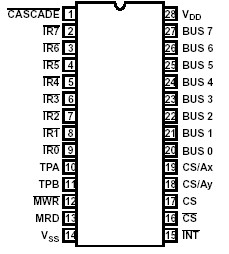CDP1877C: Features: • Compatible with CDP1800 Series• Programmable Long Branch Vector Address and Vector Interval• 8 Levels of Interrupt Per Chip• Easily Expandable• Latched Inte...
floor Price/Ceiling Price
- Part Number:
- CDP1877C
- Supply Ability:
- 5000
Price Break
- Qty
- 1~5000
- Unit Price
- Negotiable
- Processing time
- 15 Days
SeekIC Buyer Protection PLUS - newly updated for 2013!
- Escrow Protection.
- Guaranteed refunds.
- Secure payments.
- Learn more >>
Month Sales
268 Transactions
Payment Methods
All payment methods are secure and covered by SeekIC Buyer Protection PLUS.

 CDP1877C Data Sheet
CDP1877C Data Sheet







